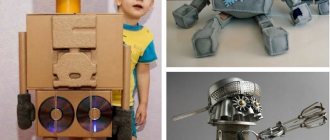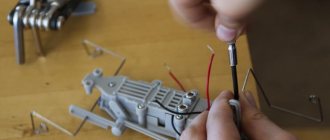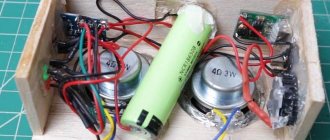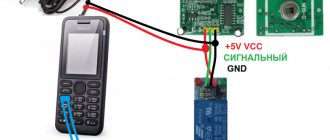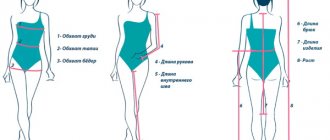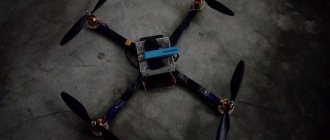Currently, there is a trend towards making your own spinning lures. This is especially true for Russian fishermen.
On the one hand, this reflects their high creative potential and ability to work with their hands, on the other hand, their reluctance to spend money on buying expensive branded baits, especially since homemade baits often turn out to be more catchy than those purchased in a store.
Wobblers, spinners, spinners and some other baits are made at home. A do-it-yourself wobbler made from a toothbrush is a vivid example of how, without spending almost a penny and with a minimum of effort, you can make a completely working bait.
Toothbrush wobblers are small baits used primarily for catching perch.
Unnecessary into necessary: where to use an old toothbrush
Lovers of sparkling cleanliness are offered an effective way to clean the seams between tiles - a very problematic place! However, removing dirt from such hard-to-reach places is easier than ever: we cut off the handle of the brush, and attach the remaining part to the screwdriver with the bristles facing out.
If there is no screwdriver, then the small brush head will still work properly, only with the help of your efforts
This device can be effectively used for cleaning dirty shoes, stubborn stains on carpet and clothes. After treatment with this attachment, the mosquito net on the window and the hood above the stove will become pristinely clean.
A regular old toothbrush can be sent to a new service - its bristles will work great in the kitchen as a vegetable cleaner.
Why don't I throw away my old toothbrushes? They can be used to make useful fishing attachments
This is how you can use an old toothbrush for fishing.
When fishing in places with a lot of vegetation or snags, there is a high risk of losing your bait. However, these are the places where the most fish are found. In order not to waste expensive baits, you can learn to make them yourself; besides, their catchability, as practice shows, is not much inferior to purchased ones. This article will discuss how to create a wobbler from an old toothbrush. It's easy, fast and practically free.
We cut the toothbrush into blanks using a hacksaw or a heated stationery knife. We make a cut in the head part of the workpiece, heat the resulting plate and bend it, forming a blade from it.
You can make two homemade wobblers from one handle. For this you will need a minimal set of tools - a hacksaw, a stationery knife, a lighter and a paper clip.
Made from foam or plastic
Foam or plastic are suitable for quickly making a disposable, but effective bait. The resemblance of an insect, for example, a May beetle, is cut out of the material using a knife or hacksaw blade.
Important! The credibility of the bait is not the most important factor; good presentation and realistic wiring bring good luck.
The cut piece is primed and a rigid wire is threaded through it, forming a fastening loop and an eyelet for mounting a tee. This option is excellent for making a surface bait known to spinning anglers as a non-hooking wobbler.
Foam fish
It is quite easy to assemble a wobbler-component from foam rubber. To do this you will need thick foam rubber and wire. Having cut out the first link in the form of a fish head or even a triangle with scissors, the element is threaded onto the wire, making two loops at its ends. The second part of the wobbler is cut out like a tail and, by analogy with the first part, is strung on a wire with loops. Now all that remains is to connect the central loops together, resulting in a two-part fish. A tee is mounted on the tail section, and the front loop is used to connect to the cord. Having loaded the bait with a Cheburashka, you can comfortably and most importantly successfully fish for perch, pike perch and pike.
Fishing for a condom
The process of making a homemade lightweight wobbler from a toothbrush: 1. First, you need to heat the blade of a stationery knife over a fire and cut off the necessary part from the toothbrush. You can see the details in the photo. It is better not to throw away all the remaining parts of the brush, because you can use them to make another bait.
First, I sawed off part of the handle to the desired length. Its big advantage is that the handle is initially symmetrical, so when creating a bait you only have to process the head of the future wobbler. The plastic turned out to be hard, so the work required a file, a metal file and sandpaper.
Making the body of the bait is not particularly difficult. Now it's the blade's turn. Any plexiglass or transparent plastic 0.5-1 mm thick is suitable for it, and there are always a great variety of products made from these materials at hand. In my case, this is the lid of the box. We draw the future blade with a marker, taking into account the body size of the future bait, and carefully cut it out with a metal file. Then we process the blade with sandpaper and finally adjust it.
After a fisherman has visited a body of water that is unfamiliar to him, overgrown with algae and grass, and has lost a couple of good baits, the desire to fish in this place is cut off. In this case, you need to turn your attention to homemade baits, which are not expensive to make and you don’t mind losing. Often in overgrown reservoirs there are a lot of fish that hunt in such places and are probably not averse to eating artificial bait. Today we will make a homemade ultralight wobbler with our own hands, which is easy to make and quite catchy in reservoirs, especially well attracts the attention of striped bass and small pike. To make a homemade wobbler from a toothbrush, you will need the following material: • an old used toothbrush; • a paper clip; • swivel clasp;• triple hook with winding ring;• double hook with winding ring;• red or yellow beads for eyes;• pliers;• utility knife;• lighter.
Second way
The second method requires a little more time to produce artificial bait.
What you need
The key material in the process of creating bait will be a used toothbrush, and then on the list:
- metal wire;
- rasp;
- sheet plastic;
- sandpaper;
- hacksaw;
- tees with a winding ring;
- Super glue;
- pliers.
You will need beads that will become the eyes of artificial baitfish.
DIY wobbler made from a toothbrush
When fishing in places with a lot of vegetation or snags, there is a high risk of losing your bait. However, these are the places where the most fish are found. In order not to waste expensive baits, you can learn to make them yourself; besides, their catchability, as practice shows, is not much inferior to purchased ones. This article will discuss how to create a wobbler from an old toothbrush. It's easy, fast and practically free. This small wobbler belongs to the ultralight category; with its help you can seduce such predators as perch and small pike.
Operating principle of the extractor
How to use the extractor?
Extractor for fishing [salapinru]
A fishing extractor is designed to quickly remove a hook from a fish's mouth. There are two types of extractors: one type is made in the form of a needle, at the end of which there is a special cut, with the help of which the extraction process is carried out, and the second type is made in the form of tweezers, with the help of which the hook is grabbed and pulled out. To ensure a reliable grip, notches are made on the tips of the tweezers, which allow you to securely grip the hook.
Loading
By themselves, toothbrushes have positive buoyancy , but after they are loaded with winding rings and tees, they become sinking. In order to make them sink strongly, which is sometimes necessary, you can make a small hole in the body of the wobbler into which a lead pellet is inserted, and the insertion site is sealed.
You can also glue a small lead piece to the belly side of the wobbler. Other anglers want their wobbler to float. In this case, cut out a thin strip of polyurethane foam and glue it to the back of the wobbler with the same superglue. After experimenting, you can even make a suspended wobbler.
Advantages and disadvantages
A bait made with your own hands has its pros and cons, they are worth considering to find out whether it is worth spending the effort to create it or not.
A homemade bait has many significant advantages, of which I would like to highlight the following:
- availability of the material, even if you don’t have an unnecessary toothbrush at home, you can always buy it in a store for a low price;
- the angler has the opportunity to make bait at his own discretion;
- simplicity and ease of manufacture;
- selection of materials for homemade products;
- the finished product in total has a low cost.
The only disadvantage is that the size of the brush is limited, and therefore it is impossible to create a larger bait.
With such bait you won't come home without a catch!
There is nothing more pleasant than catching a predator with a homemade product made with your own hands. After all, the process of making artificial bait is no less enjoyable than the fishing itself.
Adjustment
The final stage of making a wobbler is its adjustment . To do this, tie a wobbler on a fishing line to a whip and begin testing it in a container of water. When tilting the wobbler to one side, use pliers to bend the nose loop in one direction or another until the bait begins to work perfectly.
Expert opinion
Knipovich Nikolai Mikhailovich
Zoologist, hydrobiologist. I am interested in fishing at a professional level.
Interesting! Skilled fishermen make not only wobblers, but also poppers and walkers from toothbrushes. Of course, these baits must have positive buoyancy. Their production requires a certain amount of experience from the craftsman.
Dye
The bottom of the wobbler, made of multi-colored plastic, definitely needs painting to give it visual appeal.
Otherwise, the predator will never take the bait:
- The wood is coated with varnish or a special solution that clogs all the pores. This way it lives longer and does not swell when in contact with water.
- If you use iron and make a composite wobbler, then coloring should begin with a sketch, adding all the necessary colors to the drawing, it will then be much easier to figure out the colors of the tackle. It is better to paint wooden parts before joining.
The simplest equipment can be obtained even from a toothbrush; just slightly chop its body with a knife, and you have got a good equipment, the main thing is not to forget to attach a weight to it. Any tightly closing box is suitable for storing and drying the equipment after applying the varnish; it is best if it has airtight fastenings.
Run-in
By creating wobblers for trolling for pike-perch, pike or perch based on the bait of a well-known manufacturer, it is quite possible to achieve identical play of the tackle. This result can be achieved if each element was made strictly in accordance with the form of the original.
If small mistakes were made, you can slightly adjust the product during run-in. The play of a wobbler in water is affected by the shape and tilt of the steering wheel. If the blade is wide, the bait plays with a large amplitude, but with a lower frequency. With a large slope of the blade, the wobbler oscillates more, but does not sink deeply into the water.
You should also adjust the position of the top hinge. It has less influence on the play of the tackle, but this element should not be ignored. The vibrations of the bait must be stable. If the wobbler is thrown to the side at high speed, you need to bend the loop at the front in the opposite direction.
But the steering wheel must pass along the axis of symmetry. After running-in, all parts are disassembled, dried and prepared for final assembly.
Do-it-yourself wobbler made from a toothbrush - a simple and catchy bait
Currently, there is a trend towards making your own spinning lures. This is especially true for Russian fishermen.
On the one hand, this reflects their high creative potential and ability to work with their hands, on the other hand, their reluctance to spend money on buying expensive branded baits, especially since homemade baits often turn out to be more catchy than those purchased in a store.
Wobblers, spinners, spinners and some other baits are made at home. A do-it-yourself wobbler made from a toothbrush is a vivid example of how, without spending almost a penny and with a minimum of effort, you can make a completely working bait.
Toothbrush wobblers are small baits used primarily for catching perch.
Advantages of homemade products
Making wobblers with your own hands has a number of advantages over purchased products. As you know, wobblers, no matter how much you might want them to be, are included in the category of consumables that support the fishing process. Loss of bait is not uncommon in spinning fishing for predators that live in hard-to-reach places in water bodies with many underwater obstacles that can firmly sit on the tees of a wobbler and break the cord. Purchased baits still have a high price and the loss of each one constantly causes annoyance to the fisherman. Homemade products cost much less, and it will not be difficult for the fisherman to repeat the products according to the remaining drawings and notes. The price factor is considered the main advantage of homemade products.
It will be equally important to give the product individual working properties, which, in a narrow specific way, the master gives to the wobbler for special fishing conditions in certain bodies of water, having studied the preferences of the fish as a result of the practice of previous fishing trips. Another advantage can be considered the ability to change the color design of the homemade product. After all, the color can be radically changed or modified by adjusting it to the desired perspective spectrum at home right after fishing, based on the experience of the last fishing. The same can be done with the game design by changing the settings of a homemade wobbler for fishing.
Making a wobbler with your own hands in one go
To make a wobbler for pike you don't need much. The first and most important thing is a toothbrush. The basis of the bait will be its handle. I recommend using Colgate Classic Health brushes. I really liked the shape of the handle and the material. Haven't tried others. But in theory you can take any one. It goes without saying, old, with shabby stubble. I think it is unwise to buy a new toothbrush to make a homemade wobbler.
The list of materials is something like this:
- used toothbrush;
- stainless steel wire 00.7-0.8 mm;
- threesomes – 2 pcs.;
- winding rings;
- the thinnest drill;
- file;
- round nose pliers;
- pliers;
- wire cutters;
- coin (ruble).
I’ll tell you how to make a wobbler from a toothbrush in detail:
- First, we saw off the handle of our toothbrush with a file. I cut off everything after Colgate.
- Next, we drill a hole diagonally from the sawn edge of the handle to the center of the wobbler. Roughly speaking, from the “tail” to the “belly” of our bait. We drill at low speeds, slowly.
- We bend the wire in half the length of the body, plus about a centimeter for the rings. We push the wobbler inside with a tool. If you don't have stiff wire at hand, a paper clip will do. Straighten it and move on.
- After the metal frame is inside the fish, we use round pliers to make rings. We bend it well. It is advisable to correct a sharp edge with a file.
- Now we need to make sure that our wobbler goes deep and plays normally. In other words, we undertake to insert a spatula into it from the “nose” side. But not anyhow, but from a certain angle. Let's look at the diagram:
- We make a cut with a file directly under the “nose” of the bait at an angle of 45 degrees.
- We saw off or cut off a third of the coin with stationery scissors. Let's try how it fits into the cut. If necessary, deepen it.
- Pour epoxy glue inside the cut. Insert a homemade blade-coin.
- All that remains is to do the simplest thing - install the winding rings, and then hang the tees on them.
I hook the leash to a large ring made of thick fishing line. I thread the fishing line through the hole at the end of the brush and tie it. More precisely, not brushes, but a full-fledged wobbler. Now we can safely call it that.
What are the advantages of making them yourself?
All spinning players can be divided into two conditional categories according to this gear:
- People who prefer purchased gear because they do not want to spend extra time and effort on something that, in their opinion, will not pay off.
- Those who make wobblers with their own hands, arguing that they have great functionality and the ability to customize such tackle to the specific requirements they need.
Main stages of manufacturing
The entire process of producing a homemade wobbler can be divided into stages. This will give a clear algorithm for performing the work, including preparing the workpiece and materials and setting up the already assembled product. The most clear logical production path looks like this:
- production of main parts: body, blade and frame for the workpiece;
- assembly of parts into a product;
- testing and debugging the operating parameters of the homemade product;
- finishing, applying paint and varnish coatings.
Materials
To create homemade wobblers, you must first pay attention to the material, otherwise you will not succeed in catching gear. The most problems arise with the body of baits, because here you need experience or the help of a mentor, as well as a lot of theoretical knowledge. For the production of a wobbler, wood is the best choice; it is easy to process and floats well with proper coating. But linden wood, despite the wide variety in the choice of this material, produces the most legendary gear.
Also, good homemade wobblers are made from spruce, and many experienced fishermen manage to adapt an unnecessary balsa float as a useful equipment.
You can make a wobbler from foam plastic or even from plexiglass, it all depends on the purposes for which you need it:
- Polymers are more convenient to process, but do not last long, but their colors are always colorful and often there is no need for additional protective coating.
- It is easy to create a composite wobbler from polystyrene foam, while production from other materials will require a lot of effort.
- For plexiglass, it is necessary to adjust the tools for special needs and experience in processing such material, but the tackle will turn out to be not only strong, but also beautiful. In some cases, such homemade products are even displayed on the shelf as works of art.
A box for wobblers is also made from wood, where it is convenient to store purchased products. The blades, one of the integral parts that allow you to regulate the depth to which the tackle is immersed, are best made from polymer materials. Particularly popular among craftsmen is polycarbonate, which has high strength and survivability, with low processing complexity.
Painting options
In practice, there are several color options, two of which we will consider in more detail in the continuation of our article, and the fisherman will choose the most suitable one when making his own wobbler at home for pike or other fish of interest to him as prey.
First way
In the first painting method, the tested product is primed, preferably white or gray, onto which the base paint is applied in contrast. Lures made of soft and porous material, for example, a cork wobbler, will have to be primed twice. After the soil has dried, they begin painting with basic tones, applying, in the fisherman’s opinion, a combative and promising pattern to the new wobbler. After the paint has dried, the bait is coated twice with deck varnish.
Second way
The second painting method will require more effort and time. It begins with completely dipping the wobbler into epoxy resin, followed by hardening of the composition. The dipping operation is carried out twice. After drying again, the future design is scratched onto the wobbler, and if the product is painted in a single color, the body is rubbed with sandpaper until it has a velvety surface. Having brought the surface into one of the states presented above, the bait is painted with waterproof paint and, after drying, coated twice with deck varnish. The method is ideal for finishing soft foam wobblers, further strengthening and reinforcing their surface with epoxy resin.
Homemade wobblers
Many inexperienced fishermen spend a lot of time figuring out lures and how to make a wobbler with their own hands, analyzing the functionality of purchased ones.
Only after gaining the proper experience can they boast of the ability to make a wobbler with their own hands, but not everyone has so much time and desire to figure it out on their own.
Fortunately, to make such gear you only need basic carpentry skills and appropriate materials. But even if the latter are not there, is it possible to make a homemade wobbler from a toothbrush? And what can you do at home?
My impressions
A toothbrush wobbler is a passive bait. His acting is weak, but there. Buoyancy is neutral. Let's watch the test of exactly the same bait in the video:
Here you can clearly see that she is swimming in the bathtub like a real fish. In field conditions the game is a little worse. You need to get used to it. I won't reveal all the secrets. I will only say that a homemade wobbler requires a leash and a step. Slow, even wiring with pauses works very effectively. Then the bait plays to its maximum – it dives, emerges, wobbles.
The impression is that pike are caught better with this bait than with thieves’ wobblers costing 300-500 rubles, which scour the water column as if they were off the chain. She has only one drawback. Soft rubberized inserts quickly become unusable. But making a new wobbler is not a problem. In our family, toothbrushes are changed every 1-2 months. While the river stands still, a dozen brushes accumulate. Make as many baits as you want. No waste. Only manual labor. And I like making things with my own hands.
I won’t be lying if I say that the homemade wobbler is my favorite. I also fished with him in rivers and swamps. For me it is universal. For several seasons now, pike, perch and zander have been biting on it like pencils. There were even trophy ones!
Tools
When studying the question of how to make a wobbler, you should pay attention to the selection of tools. They will definitely be found in the arsenal of a home craftsman. First of all, you need to prepare the knife. If its blade becomes dull, it should be sharpened well. Otherwise, it will be difficult to work with any material. The knife shouldn't be big. It is easier to shape the wobbler with a short but strong blade.
Next, you need to prepare a hacksaw for metal, files and needle files. Their profile should be different. To conveniently clamp the wire, use pliers or round nose pliers. To sand any uneven surfaces on the workpiece, you will need sandpaper. It is selected according to the type of body material. For ease of work, the workpiece will need to be held in a vice. These are the main tools. For painting you will need brushes of different sizes.
What to make from old toothbrushes
It is customary to replace a toothbrush with a new one every 3 months, because using old products becomes unhygienic. However, you shouldn’t rush to immediately throw them in the trash; old things can be given another life. We will tell you what interesting and useful things you can do with your own hands from old toothbrushes, and consider several original ways to use these devices at home.

